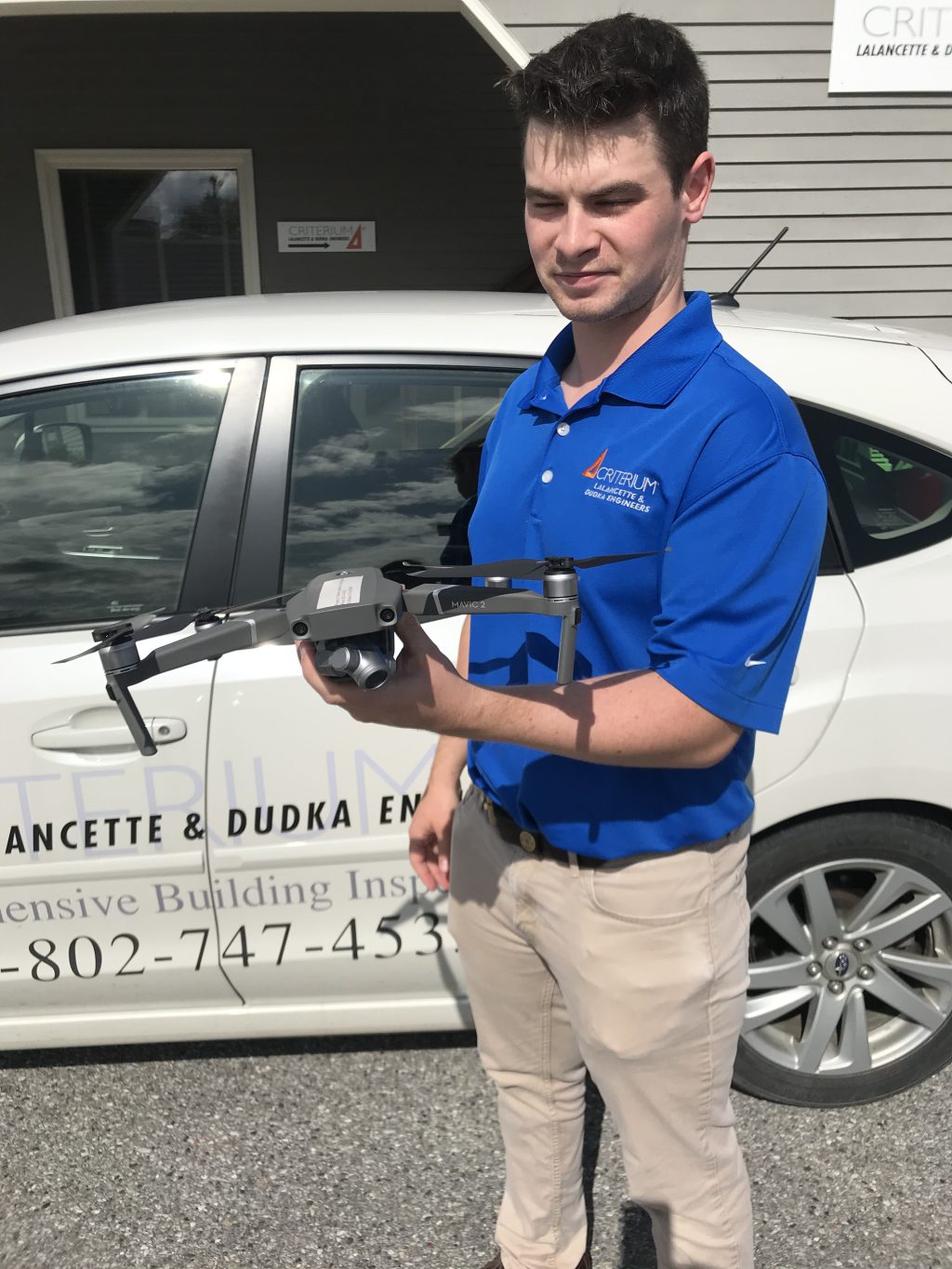Emerging technology and innovations are continually transforming the building inspection process. We are constantly evaluating and adopting appropriate new technologies to provide additional knowledge and information for our clients. One inspection innovation in particular—the use of drones—has been a change driver for Criterium Lalancette & Dudka Engineers in recent years, reaching areas that were previously unattainable by our engineering team.
 Remote-controlled drones, also known as unmanned aerial vehicles, were first used by the world’s militaries to perform complex missions deemed too dangerous for humans. To achieve similar safety goals and reduce risk, drone use has been adopted by many industries, including engineering firms.
Remote-controlled drones, also known as unmanned aerial vehicles, were first used by the world’s militaries to perform complex missions deemed too dangerous for humans. To achieve similar safety goals and reduce risk, drone use has been adopted by many industries, including engineering firms.
Using FAA registered drones operated by our licensed pilots, building inspections are now completed more efficiently, saving time and cost to our clients. They also help reduce health and safety risks to our engineers and technicians who no longer need to use ladders, scaffolding, and lifts.
At the same time, drones allow us to access and inspect areas that were previously impossible or difficult to reach building components, for example:
- The entire façade of a high-rise building.
- Fragile terracotta or slate tile roofs in a multifamily housing development.
- The entire surface area of an industrial chimney stack.
- Views of exterior, difficult-to-access HVAC equipment and envelope penetrations.
- Building dormers, gables, skylights, cupolas, and other unique architectural features.
- Risk-prone areas that are common sources for water intrusion, like exterior transitions of materials from roof to exterior wall.
Our licensed, Professional Engineers inspect and document hard-to-reach areas for our clients and with each drone inspection we produce detailed written reports. The reports contain clear guidance on the current visual condition of building components, make recommendations, and may provide better accuracy on capital planning input. Inspection reports include high-resolution drone images and may include camera photos highlighting problematic areas that are taken during any related interior inspections.
The specific knowledge we gain with new technology and innovation allows our clients to review visual evidence and make informed decisions when purchasing, leasing, or repairing a building. As new technologies continue to evolve, Criterium Lalancette & Dudka Engineers will be at the forefront of studying and adopting the appropriate tools to continually enhance our work product for our clients.
